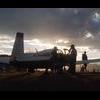Mooney IFR Students' Thread
-
Members Online
- Hank
- TCC
- Meshach
- EricJ
- Planegary
- Robm
- Jakes Simmons
- onegreen
- M20E for me
- ttflyer
- Sabremech
- Scottknoll
- LANCECASPER
- jkarch
- Crawfish
- rturbett
- Slick Nick
- PeteMc
- Aerodon
- corn_flake
- BillyT0020
- DCarlton
- Grumpy
- redbaron1982
- AndreiC
- Ragsf15e
- RangerM20
- Dick Denenny
- Trogdor
- nosedragger
- GTO1969
- spistora
- BravoWhiskey
- CCAS
- Old Chub
- good2eat
- Marc_B
- SeaLand
- jamesm
- Schllc


Recommended Posts
Join the conversation
You can post now and register later. If you have an account, sign in now to post with your account.